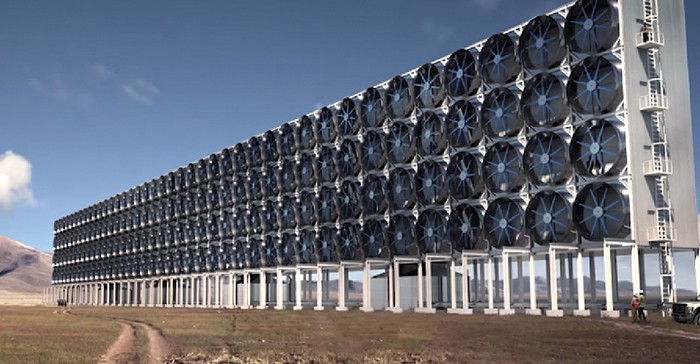 Political leadership and the ingenuity of engineers must come together to deliver solutions to the complex global challenge of climate change, writes Royal Academy of Engineering chief executive Hayaatun Sillem
Political leadership and the ingenuity of engineers must come together to deliver solutions to the complex global challenge of climate change, writes Royal Academy of Engineering chief executive Hayaatun Sillem
The striking of a global deal in 2016 to minimise the negative consequences of climate change was hailed by many as a resounding diplomatic success. Under the agreement, governments around the world agreed to limit global average temperature increase to less than 2˚C above pre-industrial levels, and to ‘pursue efforts’ to limit warming to 1.5˚C. The Paris Agreement represented a powerful political response to a global grand challenge. However, recent news that global carbon emissions are on the rise, after three years of little or no growth, means the challenge of meeting the objectives becomes increasingly difficult.

Stopping climate change certainly requires a global solution, but the UK arguably has a responsibility to take a leadership role. Despite having less than one per cent of the global population, the UK is responsible for around 6 per cent of historical CO2 emissions. Engineers will play a crucial role in delivering solutions to the challenge, whether through decarbonisation of power systems, transport systems and heating, advancements in renewable energy, or improvements in efficiency and demand reduction.
While efforts to date have focused mainly on reducing emissions from activities, some sectors, such as agriculture or aerospace, are very difficult to decarbonise, so mitigation efforts alone may not be enough. Recent analysis suggests the route to limiting warming to 1.5˚C will require going a step further and employing methods to actively reduce the levels of greenhouse gases in the atmosphere – so called greenhouse gas removal (GGR).
After the publication of the government’s Clean Growth Strategy, the Royal Academy of Engineering and the Royal Society were asked to provide advice to government on the potential role of GGR technologies in addressing both the global aspiration and the UK’s stated ambition to reach net-zero greenhouse gas emissions at ‘an appropriate point in the future’.
GGR covers a wide range of technologies and methods but, fundamentally, requires some means of extracting atmospheric greenhouse gases and fixing them in long-term storage. Removal can be via biological means, such as afforestation or restoration of wetland habitats, or it can utilise natural inorganic reactions, such as enhanced weathering of rocks – in essence, speeding up the planet’s natural processes to sequester atmospheric CO2. As these natural solutions are limited by the capacity or permanence of their storage, engineering solutions are also being developed. One such mechanism is bioenergy with carbon capture and storage, producing energy from burning biomass and storing the CO2 produced in geological formations or the deep ocean.
A further engineering solution is direct air capture, using chemical processing to extract CO2 from the air, a process that is very much at the development stage. The report is expected to be published in the autumn, but the work to date has highlighted the complexity of this topic. Alongside the very significant direct engineering challenges entailed in delivering technologies that work safely and reliably at the scale required, decision-making around deployment will need to take into account many other factors.
For example, there may be significant environmental impacts associated with perturbation of ecosystems and risks to biodiversity. The economic viability also needs to be considered, the current carbon price being insufficient to support the necessary scale of investment in these technologies.
Issues of social justice and equity, as well as public perception, will need to be addressed since the use of such technologies may be controversial and local impacts will need to be tensioned against global benefit. However, the challenge we face is so great that deployment of GGR may nevertheless prove to be an essential part of our arsenal.
Engineers are also at the forefront of adaptation to climate change and to increasing our resilience to future climate-related risks. This was the theme of a ‘Late Debate’ I chaired at the start of June at the London Transport Museum, which asked how ready London is to cope with an increased frequency of extreme weather events, and what engineers can do to increase its preparedness.
In a lively debate (it concluded at nearly 10pm!), there was strong consensus that we need to adopt a more holistic approach to issues such as flood risk management, recognising that, in a complex and crowded city such as London, a systems approach is essential.
For example, one of the panellists spoke of his experience working on Crossrail – for which the design life is 120 years. Designing to deal with future flood risk depends on the performance of London’s primary flood defences, as well as the security of the underground and surface railways to which Crossrail connects. One innovative approach has been to use excavated material from Crossrail on Wallasea Island to transform 670 hectares of farmland back into coastal marshland, providing a thriving wetland for tens of thousands of migratory birds and helping to combat future impacts of climate change on people and wildlife, including coastal flooding. This restoration of a habitat may even sequester some carbon.
This is a great example of political leadership and engineering ingenuity coming together to deliver an innovative solution that benefits communities and the environment. We will need many more of these partnerships, and all of our ingenuity, if we are to make progress at the rate required to both limit global temperature rise and increase our resilience to its harmful impacts.










UK Automotive Feeling The Pinch Of Skills Shortage
Aside from the main point (already well made by Nick Cole) I found this opinion piece a rather clunking read: • Slippery fish are quite easy to...